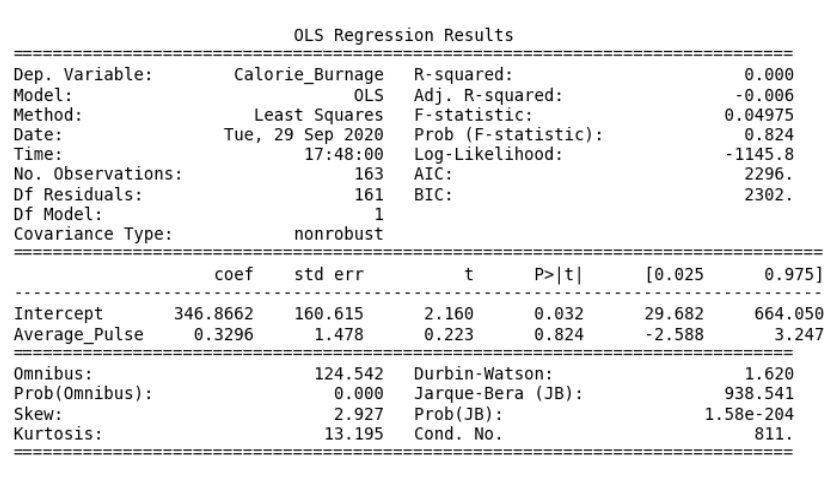数据科学 - 回归表
回归表
线性回归的输出可以总结在一个回归表中。
表格内容包括
- 关于模型的信息
- 线性回归函数的系数
- 回归统计量
- 来自线性回归函数的系数统计量
- 我们在此模块中不涵盖的其他信息
以 Average_Pulse 作为解释变量的回归表

您现在可以开始分析高级输出了!
在 Python 中创建线性回归表
以下是在 Python 中创建线性回归表的方法
示例
import pandas as pd
import statsmodels.formula.api as smf
full_health_data = pd.read_csv("data.csv", header=0, sep=",")
model = smf.ols('Calorie_Burnage ~ Average_Pulse', data = full_health_data)
results = model.fit()
print(results.summary())
自己动手试一试 »
示例解释
- 导入库 statsmodels.formula.api as smf。Statsmodels 是 Python 中的一个统计库。
- 使用 full_health_data 数据集。
- 使用 smf.ols() 创建一个基于普通最小二乘法的模型。请注意,解释变量必须写在括号内。使用 full_health_data 数据集。
- 通过调用 .fit(),您可以获得 results 变量。它包含了有关回归模型的许多信息。
- 调用 summary() 以获取包含线性回归结果的表格。

